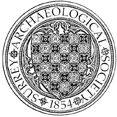Sutton Park
The fourth season of excavation by D G Bird for SCC and SyAS completed the plan of the 16th century brick building — a rectangle c 4 by 3 metres — and further examined the medieval ditches, whose purpose and plan remained unclear. (175)

1066-1600